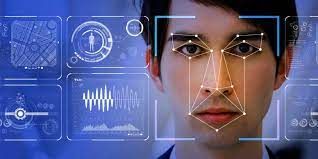
The modern digital landscape has given rise to a phenomenon that’s both captivating and concerning: Deepfakes. These realistic yet entirely fabricated videos have garnered significant attention in recent years.
As we traverse the expansive landscape of technology, these lifelike yet entirely synthetic videos have woven themselves into the very fabric of our digital society. The allure is captivating, the implications profound.
But how do they work, and what implications do they hold for our digital society?
Join us on an exploratory journey into the heart of Deepfake technology, where reality meets artificial intelligence, and the consequences resonate far beyond the confines of our screens.
Understanding Deepfake technology
Deepfakes, a portmanteau of “deep learning” and “fake,” refer to media, often video and audio, manipulated using deep learning techniques to present false information. The technology behind Deepfake employs artificial intelligence (AI) to create convincing but entirely fabricated content. This raises significant concerns about misinformation, privacy invasion, and the potential to incite distrust in visual and auditory evidence.
The technology behind the illusion
1. Deep learning algorithms
Deepfakes rely heavily on deep learning algorithms, which are a subset of machine learning. These algorithms analyse vast amounts of data to understand and replicate the subject’s facial expressions, voice patterns, and gestures. They can seamlessly blend these elements to create a seamless, lifelike portrayal.
2. Generative Adversarial Networks (GANs)
Generative Adversarial Networks are at the core of Deepfake technology. GANs consist of two neural networks, a generator, and a discriminator, locked in a continuous cycle of competition. The generator attempts to create fake content, while the discriminator assesses its authenticity. This ongoing rivalry results in ever-improving Deepfake quality.
3. Data collection and training
To create a convincing Deepfake, a vast dataset of the subject’s images, videos, and voice recordings is required. The AI model must be trained on this data to understand and mimic the subject’s unique characteristics. The more data available, the more convincing the Deepfake becomes.
4. Ethical concerns
Deepfake technology has raised significant ethical concerns, particularly regarding privacy and misinformation. As these forgeries become more convincing, they can be used to deceive individuals and manipulate public opinion, making it crucial to establish clear guidelines and regulations.
The impact on society
The proliferation of Deepfake technology has far-reaching consequences for various sectors. From politics to entertainment, the implications are profound:
1. Political manipulation
Deepfakes can be used to create fabricated speeches or videos of political figures, potentially causing confusion and chaos. Political opponents might misuse these tools to harm reputations or influence elections.
2. Entertainment industry
In the entertainment world, Deepfake technology can resurrect actors for posthumous performances, or create entirely new ones. While this opens up exciting creative possibilities, it also raises questions about consent and authenticity.
3. Cybersecurity
The rise of Deepfake poses a considerable threat to cybersecurity. It becomes increasingly challenging to distinguish real from manipulated content, making it easier for cybercriminals to deceive individuals and organisations.
In the evolving landscape of Deepfake technology, staying vigilant is key to safeguarding our digital future. Stay informed, stay secure.










